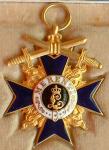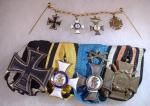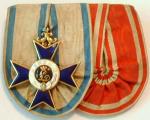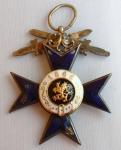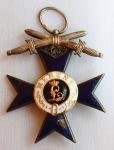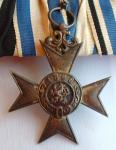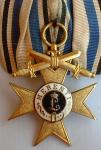
Beau Newman
Valued Member-
Posts
741 -
Joined
-
Last visited
-
Days Won
1
Content Type
Profiles
Forums
Blogs
Gallery
Events
Store
Everything posted by Beau Newman
-
All this does raise a question. The Bavarian MVO was probably the most widely awarded house order of the war with well over 20,000 in all classes. One would expect that at least on the order of a few thousand were awarded in 3rd Class. If that is the case, where are they? They are seen much less often than many awards that were awarded less liberally. Any ideas?
-
Nice I know that many of the 3rd Classes a gilded 4th Classes but, the gilding on this one really "pops". The cross is marked "950 J.L.", the swords are marked "J.L. 900" and the suspension ring is marked "900". I think Leser was a maker of the 3rd Class crosses. Is there anything else to look for when trying to dertermine if a piece is a gilded 4th Class?
-
In the abbreviated nomenclature, the Grand Cross is 1, Commander is 2, Knight 1st Class is 3 and Knight 2nd Class is 4. This lines up with the Prussian system (such as the Red Eagle and Crown Orders) in which the classes were designated 1st, 2nd, 3rd, 4th instead of Grand Cross, Commander's, Knight 1st and Knight 2nd. There is a good explanation on the shorthand near the top of this category.
-
It is a bit confusing. The MVO had 2 classes of Knight from 1866 to1905. The Knight 1st Class was retained unchanged as the 3rd Class Order after 1905. The 2nd Class Knight was a gold enameled cross without flames. This was replaced in 1905 by the 4th Class Order which is the familiar silver enameled cross with flames. Here is a pre-1905 Knight, 2nd Class. It is the same as the pre-1905 MVK except the cross is gold instead of silver.
-
And even earlier - A MVK type of 1866-1905. Only 1 class which was a silver enameled cross without flames between the arms and gold centers. The swords were not authorized until 1891 but, apparently, could be added by recipients back to 1866. This one is marked "AH" on the ribbon ring for Adam Hausinger.





